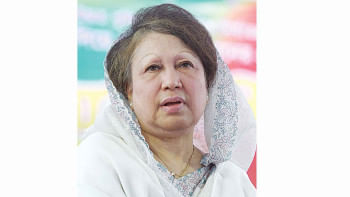Commemoration: Reading memorials as cultural texts

LITERATURE on commemoration has rapidly grown in the past twenty years. Scholars from a variety of disciplines, for example, from archeology, architecture, history, anthropology, psychology, philosophy, geography – and the more inclusive field under the rubric of Cultural Studies – are mapping the significance and role of “memory “. Commemoration is defined as a “call to remembrance“. Particularly in the remembrance of the war dead, commemoration has become deeply rooted in the cultural practices of a nation. War memorials are located in urban spaces, where material objects stand for and embody memory.
Memorials and monuments occupy both geographical and symbolic space, and are thus read as narrative/ cultural texts. Cultural critics interpret the diverse textual connotations of these objects and artefacts within the performative arena of the act of memorialization. The student of cultural studies needs a comprehensive compass to negotiate the interstices of such 'texts'. Memorialization is a complex social and emotional process involving 'historical or collective memory' and the more 'personal individual memory'. Memorials are concrete 'sites' of memory, imbued with ritual evocation of mourning and melancholia.
The Martyred Intellectuals Memorial, Rayerbajar, is a potent, dynamic monument recalling the violent history of the birth of Bangladesh. It is a shrine, a symbol of our eternal sorrow, and a tribute to a heroic sacrifice. Paradoxically, the memorial is also a living reminder of the hatred of the enemy, of the enemy's rabid rage to cripple our nation. For every Bangladeshi today, the Rayerbajar memorial is the symbol of everlasting pride in having had the Martyrs in our midst while they lived. We shall be forever inspired by their works and noble leadership. On 14 December, we remember them and cherish the gift of the legacy of extraordinary accomplishment they have left to the nation.
We ritually commemorate the illustrious dead with lamentation and libation and elegiac lyric. There is a glorious historical tradition of such ritual evocation and commemoration in all cultures since ancient times. Epic songs cycles honour the fallen heroes of warrior tribal societies, and ritual burial ceremonies created geographical sites of memorialization, such as burial mounds, or crypts, pyramids, and obelisks. When I look at the architecture of the Rayerbajar memorial, I am moved by the overwhelming semiotics of its structure. The open, bowl-shaped red-brick monument symbolically corresponds to the majestic Viking ship, sailing across leagues of mighty oceans, under the clear canopy of the blue sky. I see our honourable dead resting peacefully at night on the alluvial soil of their motherland, their eternal journey emblazoned by the trajectories of celestial stars and planets.
My mind equates the Martyrs' final voyage with the glowing, resplendent setting forth of the heroes in the fiery Viking ship-burial ceremony. Their souls are beckoned by the distant thunder of Valhalla. My heart beats to the rhythm of the gliding clouds and the breaking sea wave as I linger at the Rayerbajar site. My eyes shine with tears lit by the essence of the Martyrs' spirit radiating into my world through the large, square window on the wall of the Martyred Intellectuals Memorial.
The writer is Professor, Department of English, University of Dhaka.

 For all latest news, follow The Daily Star's Google News channel.
For all latest news, follow The Daily Star's Google News channel. 



Comments